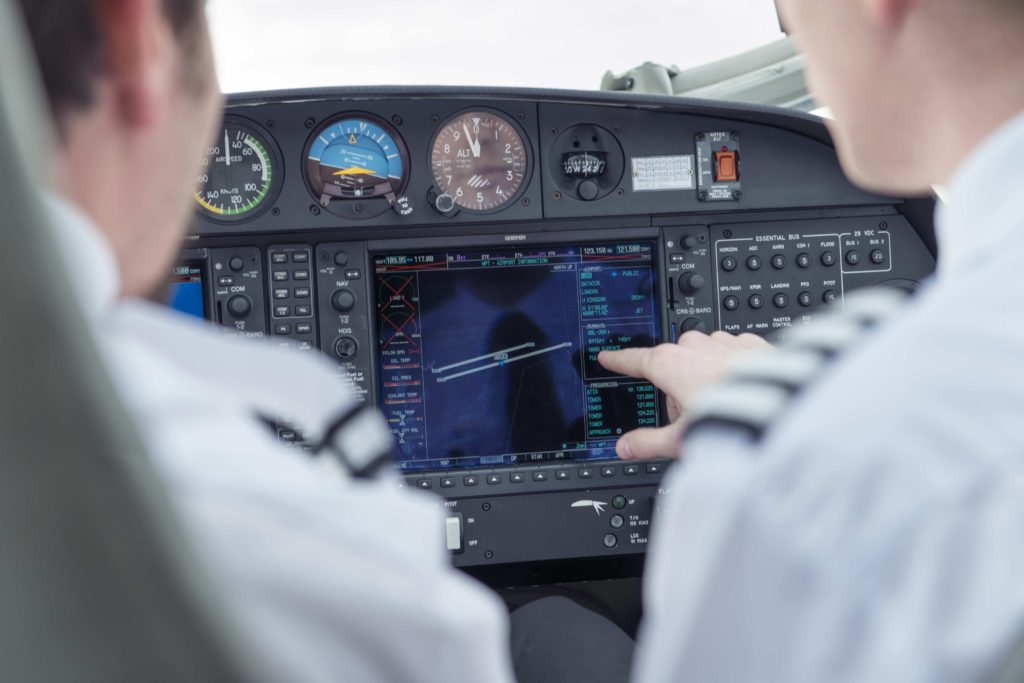The instruction from ATC was succinct: “Cleared for the ILS approach runway 21, report when established”. It was met with a crisp acknowledgement from my student, Tim. He banked to the left and rolled out on a suitable heading, aiming to intercept the localiser – the narrow radio beam on the Instrument Landing System which would guide us directly to the runway. Vision outside was largely obscured by an enveloping shroud of stratocumulus. Brief peripheral glimpses of the ground might have tempted Tim’s attention away from the panel in front of him, but he resolutely stuck to his focused instrument scan. In spite of the increasingly bumpy ride the clouds were affording us, he was deftly keeping us well within our permitted margins of height, speed, and heading.

During our pre-flight briefing we had discussed, among other potential threats, that this would be a procedural approach where ATC had no radar available. Therefore correct and timely position-reporting would be essential. In such an ATC environment, those vital snippets of information, provided by each pilot, are the only data the controller has available, by which she or he can maintain separation between the various machines flying out there in the murk. While pilots can be preoccupied with ensuring they are reporting their current position correctly, controllers think ahead immediately to the next significant position, and in doing so they give equal consideration to time as much as distance. “Where is this chap going to be in two or three minutes?” is more the focus of their thinking, and by manipulating the calculated forward positions of various players aloft, and sometimes on the ground, they safely manage their smooth aerial choreography, ballet masters of the skies.
These factors became important when Tim had reported we were established, because the next ATC instruction was “Continue your approach, report at 3 DME”. In other words the controller wanted to be told when we were three nautical miles from touchdown. This kind of request is typical in a controller’s calculations: knowing the approximate ground speed of the approaching aircraft he or she will be thinking they will have another minute or two to manoeuvre other parties, perhaps to clear a lined-up aircraft for departure, or to permit ground traffic to enter or cross the runway.
Tim acknowledged the request, but there was something in his voice that told me he was now deeply preoccupied with maintaining our position on the glideslope as the beam narrowed, the turbulence increased, and the margin for error diminished. I mused to myself, would he make the report? Sure enough, as we passed 3 nautical miles he said nothing. While Tim worked to keep us on the glide slope, the DME counter was ticking down rapidly in tenths of a mile, and had gone below 2 miles when we finally broke out of cloud with the runway directly in front of us. To Tim’s alarm, however, we saw not just the runway, but also the Boeing 737 lined-up on the runway, less than a minute away. Just as he was about to key his microphone, the Boeing was given take-off clearance. Tim spoke urgently “Tower,G–, final runway 21 one mile!” ATC told the Boeing to stop its departure, and instructed a chastened Tim to enter visual holding. Muttering a few choice words of self-deprecation, he flew us to the holding point. Why, I asked him, had he not reported at the 3 mile point? It was his failure to do so which had compounded the situation and led to the potential conflict with other operations. His answer was ruefully blunt: “I forgot”.
At this point, I reached for my computer mouse and paused the simulation (I should just mention that for those marvelling at my calmness in the cockpit during this close encounter). One of the great advantages of the various flight training devices available to instructors these days is the ability to create scenarios which would not be safe to attempt in real flight. In the case at hand, I had designed our little drama in order to examine a problem Tim had been experiencing, which was frequently failing to give required position reports or to conduct certain procedures prompted by memory alone.
As pilots, we are obliged to remember a multitude of facts, techniques and skills which in total constitute our ability as aviators. But memory comes in more than one variety. Psychologists will distinguish the concepts of retrospective memory (content and information we have acquired in the past), and prospective memory (information or actions we will have to recall or execute in the future – ‘remembering to remember’). In Tim’s scenario, his retrospective memory was intact: he knew the importance of making the position report, from various previous discussions in the classroom and in the cockpit. However his prospective memory had lapsed: he forgot to make the report at the crucial moment. The competing demands of the moment had erased his awareness of that requirement, even though it has been requested by ATC only a couple of minutes beforehand.
Prospective memory failures – we could call them ‘forgetting to remember’ – have been a factor in numerous accidents and incidents, and 95% of pilots will admit to having experienced them during their flying activities, (the other 5% are telling blatant lies). Failure to lower the landing gear, to switch the fuel tanks, to climb or descend at the correct time – the list is legion. Research into how to prevent prospective memory lapses has studied the causes and contexts within which these lapses occur. Task-saturation can overwhelm the pilot’s attention and push the prospective operation out of memory. Unfamiliar situations (say, a late change of landing runway or required heading) can distract the pilot from a task he or she was about to execute and when the distraction is passed, the task can be skipped or overlooked. Cues that normally prompt a specific task may be absent (for instance changes in operating procedures on a new or variant type of aircraft).
One obvious strategy which has been employed in preventing such failures is the use of checklists. Today’s pilots would be surprised at the resistance to checklists displayed by some pilots in the early days of aviation. They were perceived almost as an insult to their flying skills and intelligence. However not every task can be added to such a list – pilots must be able to cope with and respond to impromptu events and requirements. In Tim’s case, he felt that while he had verbally acknowledged the ATC instruction, he had not made a specific intention in his mind to make the position report. Research has shown that fixing such implementation intentions significantly improves the success rate for prospective tasks. Studies have also shown that we will remember critical items more effectively if other tasks are dealt with as early as possible, if we create reminder cues which are hard to miss, or if we link cues to habits which have already been formed. A further technique I have suggested to students with some success is to take the Threat and Error Management concept of ‘Undesired Aircraft State’ and reverse it: at crucial phases of flight run through a list of items which would constitute the ‘desired’ aircraft state for that moment: in Tim’s case, it could have included ensuring ATC were aware of his position.
Instructors and students can profit from active exploration and discussion of ways to improve pilots’ ability to ‘remember to remember’, and the significant body of research which is being conducted on the interesting and vital topic of prospective memory.
Copyright © 2016 Darragh Owens. All rights reserved.







